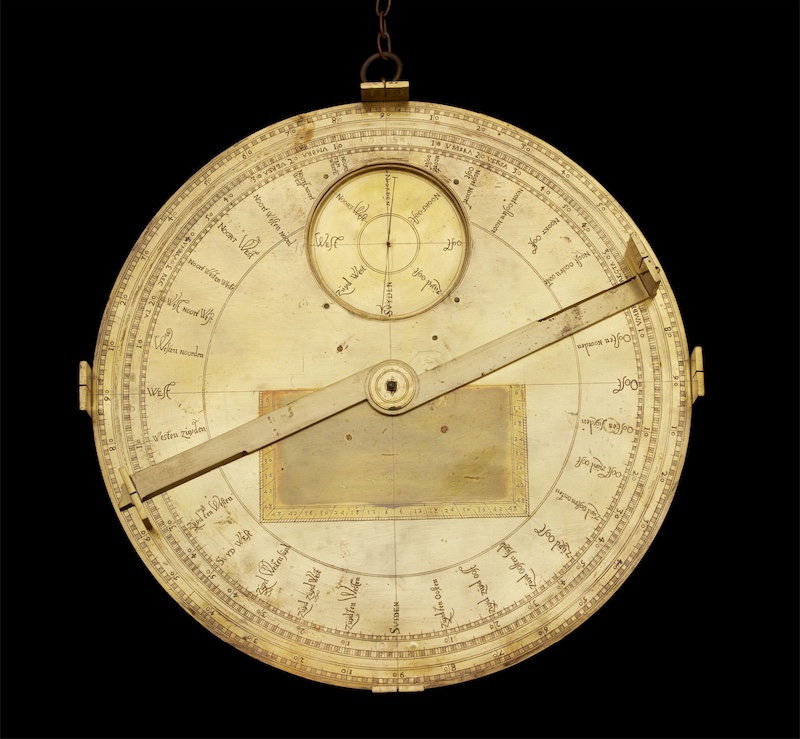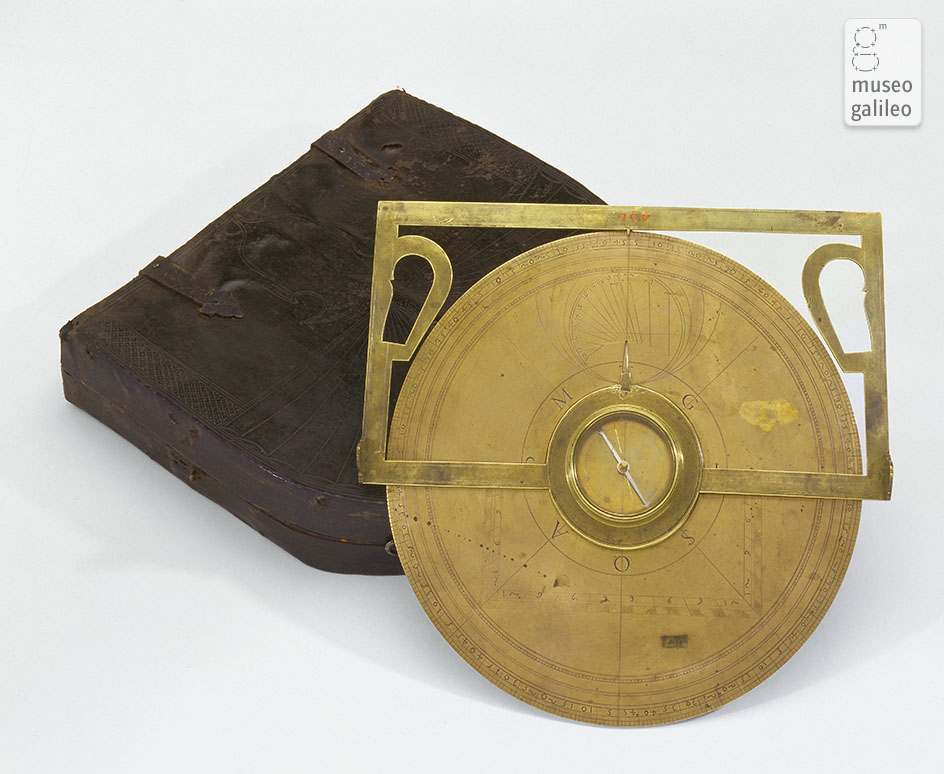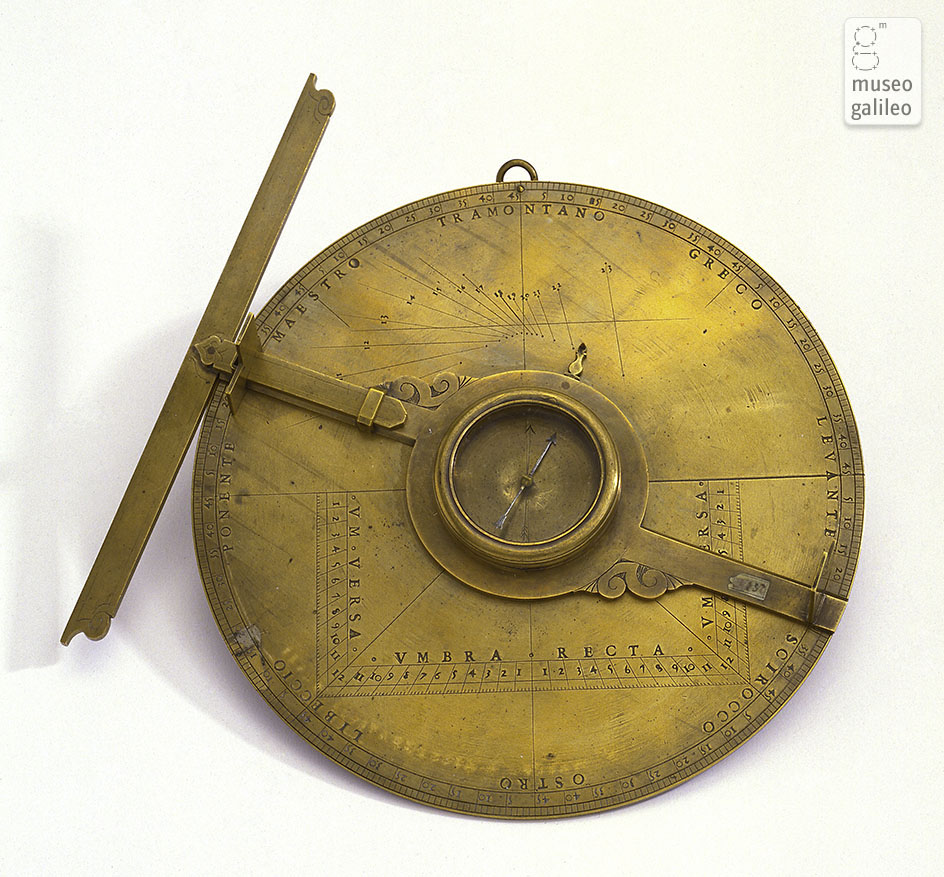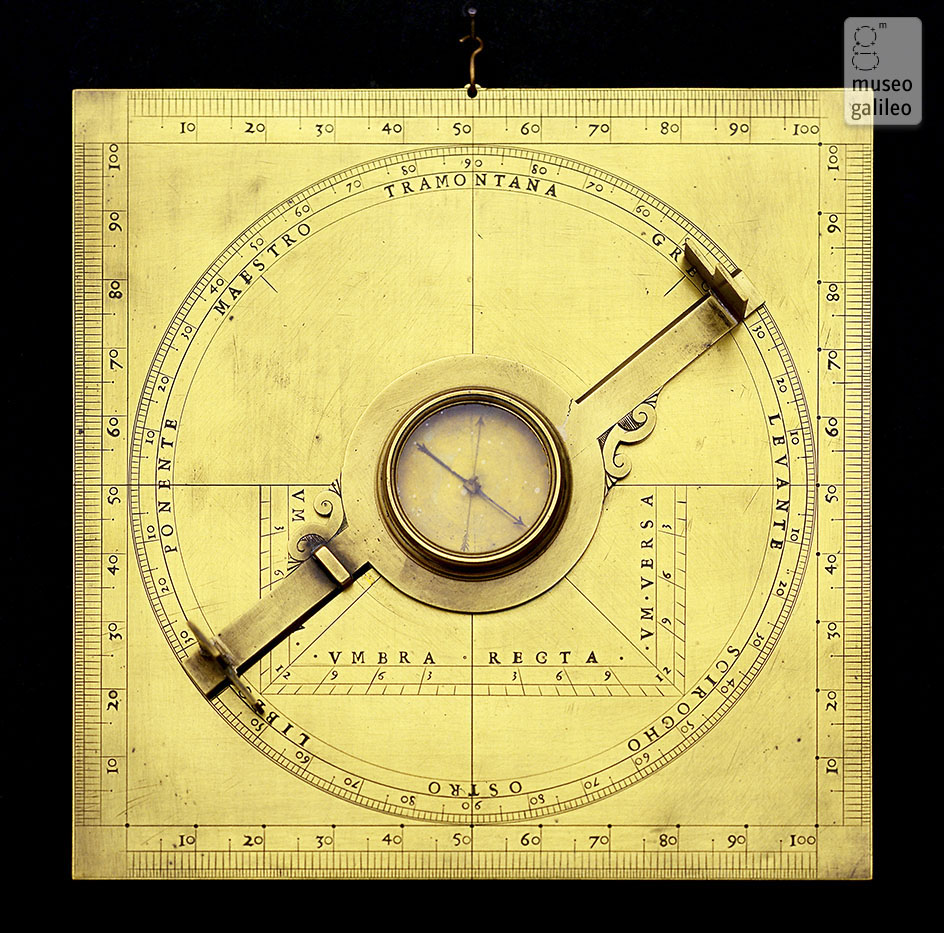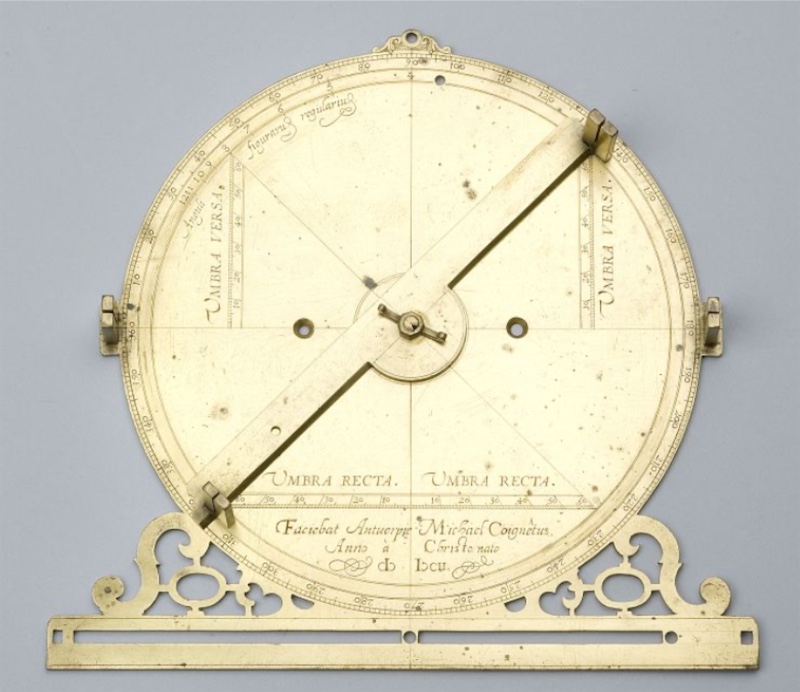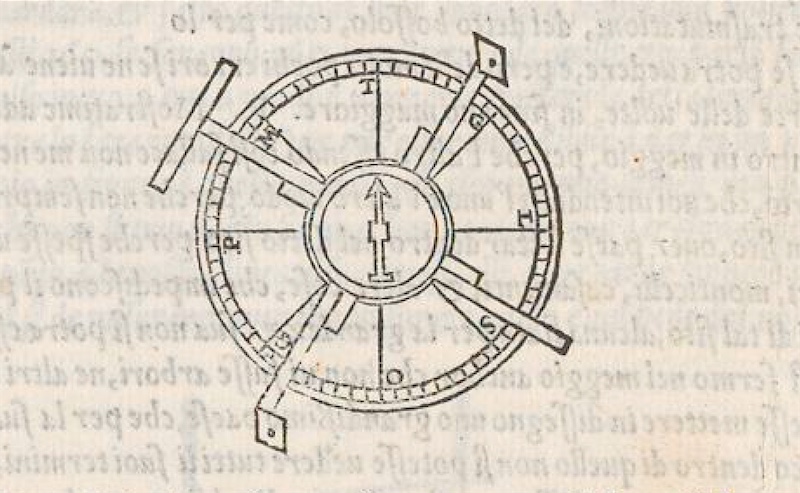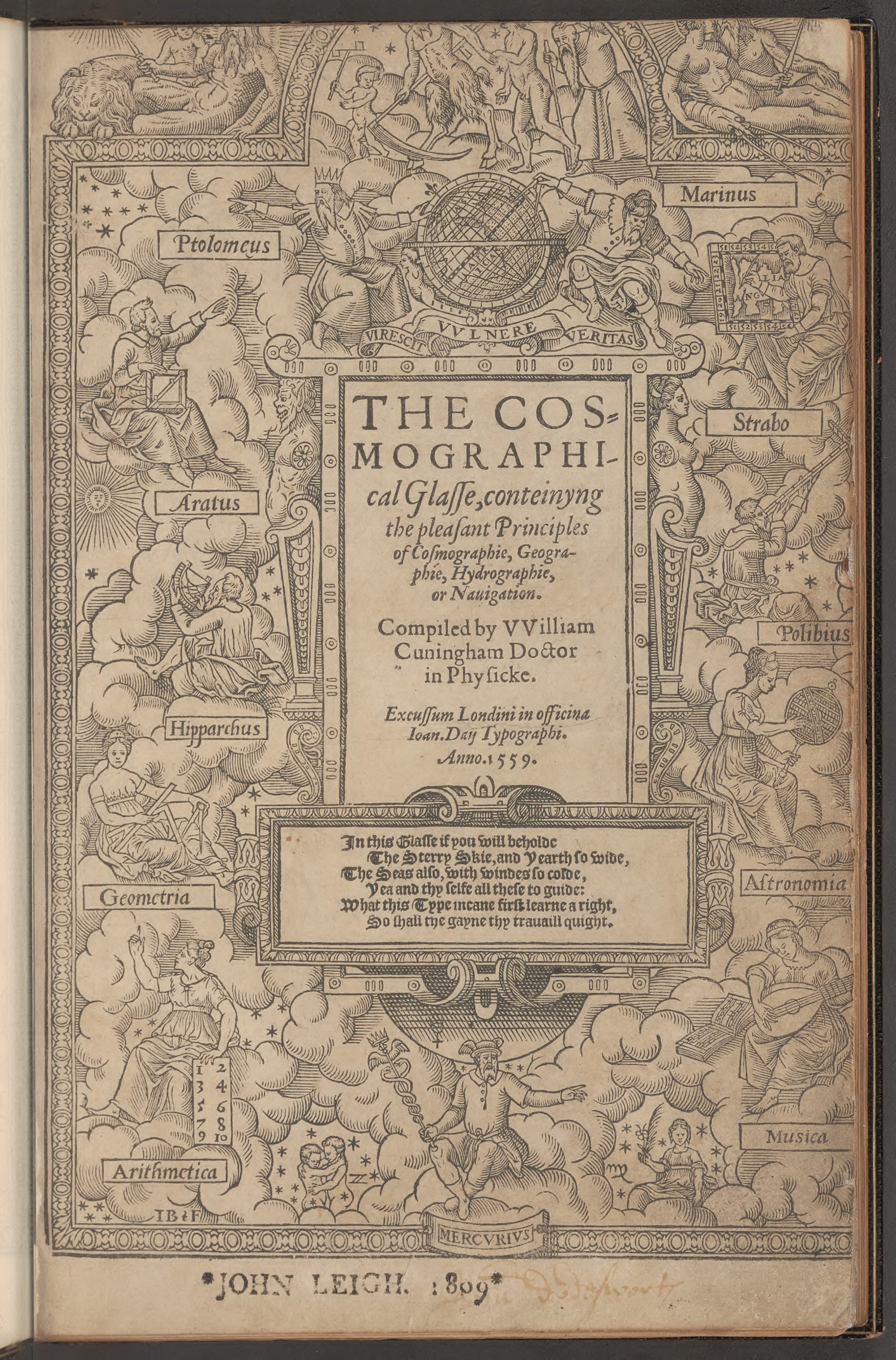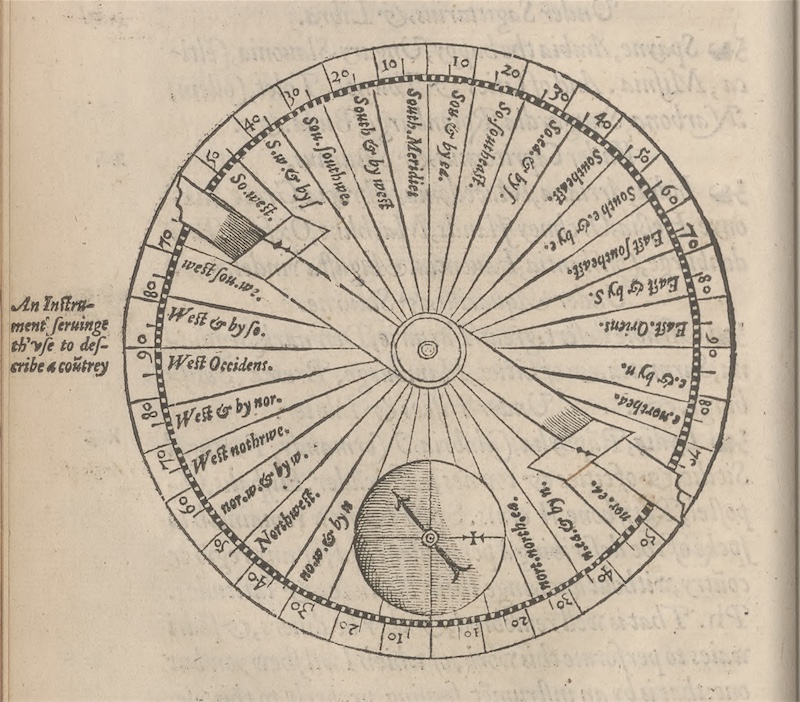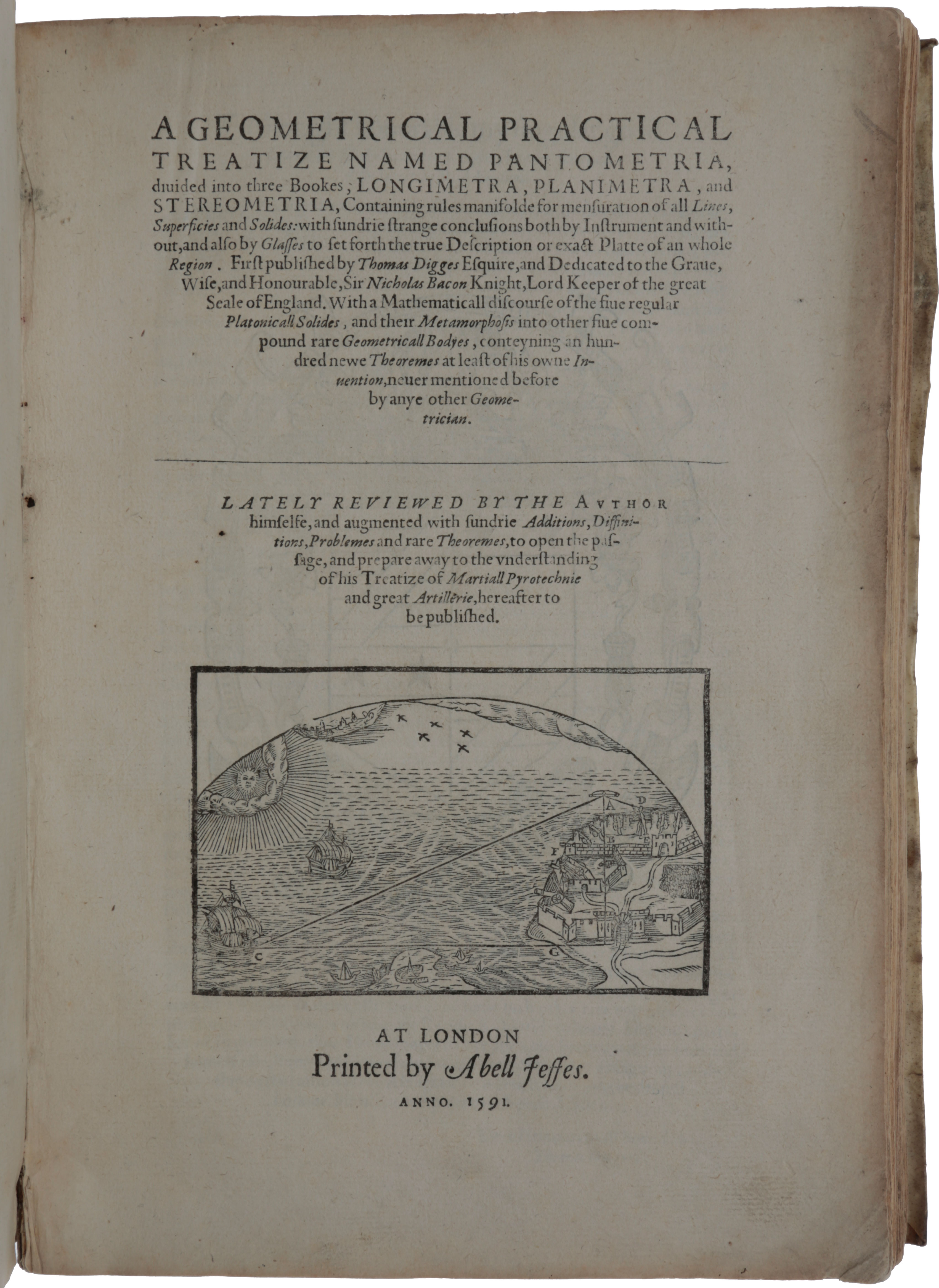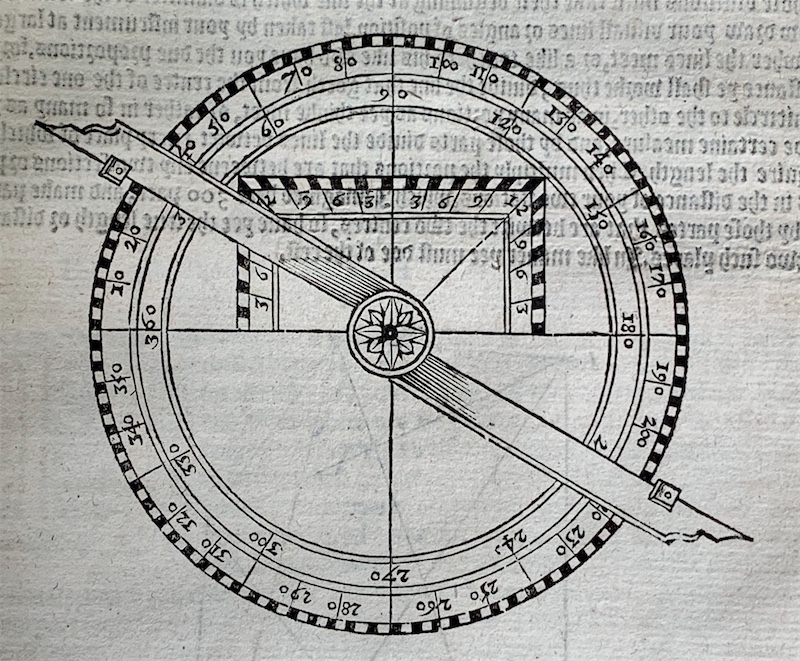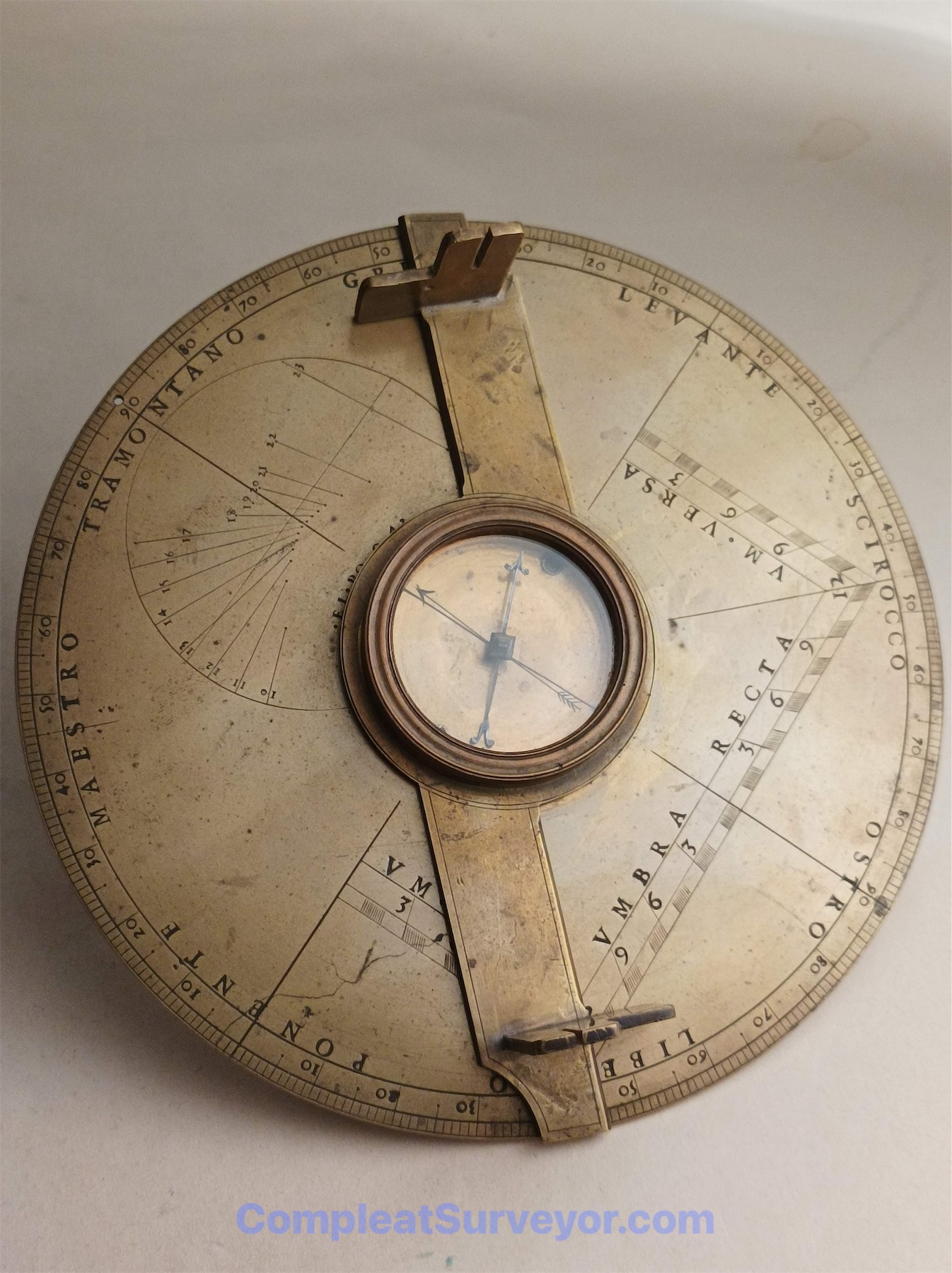
Circa 1570 Simple Theodolite Attributed to Giovan Battista Giusti
First Generation Theodoloites (Circa 1500 to 1600) - Derived From An Astrolabe
First Generation Theodolites measured horizontal angles with an alidade that rotated over an outer 360 degree scale, which was generally divided by single degrees. These early theodolites often had a compass, but the compass was only for orientation. The compass was not divided, and did not rotate when the alidade was rotated.
A key characteristic of First Generation Theodolites - like the back plate of an Astrolabe, these very early theodolites do not have cutouts in the brass circular plates to reduce the weight of the instrument. Those cutouts would start to happen in 1600 to 1620, and would be one of the defining characteristics of Second Generation Theodolites.
First Generation Theodolites also typically included a Geometric Square scale inside the divided circle. The Geometric Square (The VERSA UMBRA and VERSA RECTA scales) allowed a surveyor to measure heights when the theodolite was held vertically. (How it works) The early theodolites often had a ring at the top of the theodolite, and the surveyor would hang the theodolite vertically off of a pole to use the VERSA UMBRA and VERSA RECTA scales.
In 1533 Gemma Frisius was the first author to suggest using the back of an astrolabe with a magnetic compass instrument as a standalone surveying instrument. (If you can read Latin, or use Google to Translate Latin, here are the pages where Frisius describes the instrument).
Collectability
I view First Generation Theodolites as highly collectable instruments for these reasons:
1. Scientific instruments made before 1600 are rare - not many were made and they are all 400 to 500 years old.
2. Most of these instruments are owned by European Museums or in large European private collections. First Generation Theodolites are not offered for sale very often.
3. First Generation Theodolites evolved into the most important surveying instrument in the world, which makes them both VERY rare and relevant to the history of surveying.
Some Examples of First Generation Theodolites
Important Books - First Generation Theodolites
Below are some of the very early books showing First Generation Theodolites. While Digges did not invent the Theodolite, Digges referred to his instrument as a Thedolelitus, and the name stuck with a sight modification. Digges' Pantometria is worth a princely sum, and has not been digitized yet.
Italy was an early leader in the evolution of surveying instruments. Books by Tartaglia and Bartoli showed instruments that were pretty close in design to what most First Generation theodolites looked like. Many of the surviving examples of First Generation Theodolites are or appear to be made by Italian Practitioners.
You will also see Cuningham's book below. The surveying section and Theodolite-like instrument portion of the book is somewhat readable. You might click on the link at take a close look at that book.
My Reference Materials
Here are the main reference books I used while researching my Ancient Surveying Webpages:
5-Volume Catalogue Of The Most Important Worldwide Private Collection Of Scientific Instruments (With 928 Color Illustrations). Written in German, but an amazing reference tool. The pictures are incredible - most of the instruments are not found on the internet. Crazy Expensive.
Bennett's Catalogue of Surveying and Related Instruments (2022). Fantastic pics and info about the surveying related instruments at the Galileo Museum (which has an INCREDIBLE collection of early instruments).
Bennett's The Divided Circle (1987). A History of Astronomy, Navigation and Surveying Instruments.
Delalande Antiques Two Volume book series on Astrolabes. The two volumes walk you thru how to use and collect Astrolabes. A must have if you want to collect Astrolabes.
Kiely's Surveying Instruments - Their History (1947) Somewhat dated now, but still has a great deal of relevant information. Not the easiest read, however.
Daumas' Scientific Instruments of the 17th and 18th Centuries (Translated into English 1972).
Richeson's English Land Measuring to 1800 (1966). A nice book that is mis-paginated unfortunately. But still contains some good information about early English land surveying.
Important Websites where you can use the search function (e.g. "Theodolite") to find instruments:
The Museo Galileo Virtual Museum - A Stunning Collection of Early Surveying Instruments
The Science Museum Group (UK Based)
Harvard University Collection of Scientific Instruments
The Museum of History and Science, Oxford
© 2020 Russ Uzes/Contact Me
